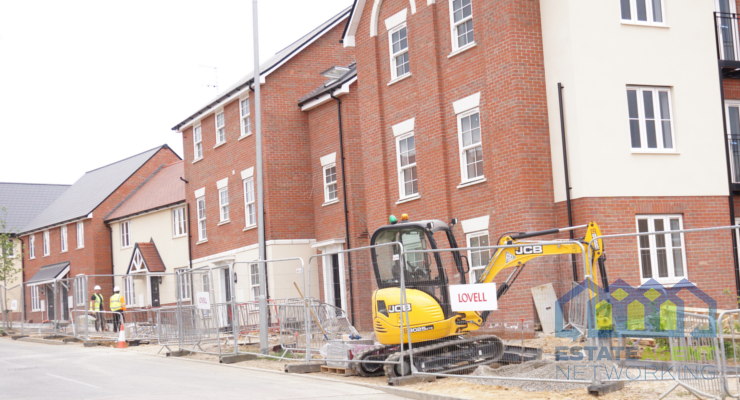NPPF Review – Thoughts from the Industry
Following the publication of the revised NPPF earlier today, Here are some thoughts from the Industry on the following:
- 1.5 houses per square km per year
- 6 year housing land supply
- Grey belt – ‘Green Belt that doesn’t conform to the Green Belt purposes and with a new colour’
- The removal of the blanket 50% affordable housing requirement
- The removal of politics from planning decisions
- A more positive conviction and tone
- A whole new narrative on development and housing delivery
- An ambitious and unrealistic – but less impossible than under the previous planning system
Ian Barnett, National Land Director, Leaders Romans Group (LRG)
What a difference a year makes. The NPPF changes announced today provide and new framework for the industry to work to and a flurry of activity on LinkedIn as everyone seeks to understand the key points and how they will affect their projects.
The key points are:
- 370,000 houses per year (that is 1.5 houses per square km per year)
- Local authorities to be accountable and old Local Plans to have a 6 year housing land supply. It doesn’t have the same ring as 5 year housing land supply but is much better than the old 3 year housing land supply!
- The grey belt is here and has been defined. It’s basically Green Belt that doesn’t conform to the Green Belt purposes and with a new colour. Now it just needs to be tested…. Who’s going first?
- Viability – the blanket 50% affordable housing requirement on Grey Belt has been removed which is sensible
- Politics – I have been calling for the removal of politics from planning decisions for sites which have the benefit of an outline or an allocation for years. Although there was no specific reference to ‘deemed consent’ in the NPPF, it’s encouraging that this is one of the main issues being considered in the recently published Planning Working Paper on Planning Committees.
There have been many grand announcements in my time in planning and development. The priority has always been to build enough houses for the country’s population in the right places in a manner that protects the most valuable landscapes and environmentally sensitive areas.
So are the latest announcements in any different to what we’ve all heard before? On paper – yes absolutely. The conviction and tone as well as the content (and indeed the fact it’s announced ahead of when most people expected!) does suggest that this time at least the Government is serious.
The new NPPF gives an opportunity for the whole narrative on development and housing delivery to change. Whilst some would like to have seen more in terms of strategic planning, today’s NPPF at least gives a new window of opportunity for many sites that are suitable for development and which have been held up by inefficiencies and lack of resources, meddling local politics and NIMBYism to come forward.
Delivering 1.5m houses in the first term is ambitious and unrealistic but it was utterly impossible under the previous planning system. The time for delivery is here and it’s the responsibility of everyone in the industry – developers, landowners, planners and local authorities to do what is needed. The framework is there – but it will take time to bed in and what we need now more than anything after a new NPPF update for the last two Christmases is stability so we can get on with the task ahead.
Peter Canavan, Partner, Carter Jonas (Oxford)
What we need is some certainty, so a policy framework that can sustain for more than a year would be positive for everyone (although we expect more legislation, and potentially more changes to the NPPF next year). What we don’t need continuous tinkering – we want to all settle into an adjusted system and deliver new homes.
There is a lot to be commended in this new NPPF, but there are still some missed opportunities.
The focus on delivery in the new NPPF is very welcomed, as is the return of the five-year housing land supply measure: there needs to be a consequence when plans don’t keep up with housing needs.
On that point, I would really like to see a more specific sanction included in the ‘transition period’ – which for many plans has been increased from 1 month to 3 months (in to March 2025) – which requires a review of all plans which are more than 20% behind the requirement set out in the new standard method, within two years, or else the new standard method will be used as the basis for calculating the five-year housing land supply from that two year anniversary date. The Joint South Oxfordshire & Vale of White Horse Local Plan was submitted on 10 December (two days before the publication of the new NPPF) with significantly fewer homes than the new standard method, and it was only submitted in order to ‘beat’ the publication of the NPPF; the councils haven’t even finished consulting on the Sustainability Appraisal / Appropriate Assessment for the Plan.
It is also positive to see that Grey Belt remains, virtually unchanged from the consultation. I think on the whole, it is a good idea, but it will be something to get used to, and something that will be difficult to apply consistently certainly in early days. The viability controls are not entirely clear in the “golden rules” but not referring to blended land values is welcomed, and the 15% increase in affordable housing might well be achievable, but this will need to be considered on a case by case basis.
The Neighbourhood Planning paragraph (14) was untouched in the consultation, and this is a concern. Notwithstanding what I say above about tinkering, I think this does need some attention. Perhaps a plan hierarchy overhaul should be part of the reforms / future Planning and Infrastructure Bill which will bring about [?] the SDS: Some guidance for regional plans, local plans and neighbourhood plans. All DM policies are to be ‘nationalised’ and development plan documents are to be sued specifically for allocating development sites. If they don’t allocate, they don’t have material weight…
Some more positivity / freedoms for commercial development will be good to see and use. The clustering point is good, but perhaps there should be a more specific mechanism to support speculative enterprise where local plans are ‘silent’ on the matter. A five year land supply for employment space, if you like.
There is clearly lots of other detail about transport impacts and severity, climate change, flooding, and design, but for me it is the management of housing delivery that is key and should provide some positivity / momentum for the new year, if not the monumental boost that we need to achieve 1.5 million new homes over this parliament.
Sav Patel, Associate Director, Lanpro:
The Labour government’s much anticipated updated NPPF has landed, just in time for Christmas! Planners up and down the land will now be scurrying to forensically examine what is new, what is in, and what is out, before the whiff of Brussels sprouts fills the air.
As we already know, the government has an ambitious target of delivering 1.5 million new homes over the next parliament to help ‘get Britain building again’ and grow the economy. This equates nicely to 300,000 new homes per year. As we know, this is ambitious because this annual rate of house building has never been achieved in the last 25 years. There will also be a strong focus on supporting economic growth in key sectors including renewable energy.
So, What’s New? The ‘grey belt’ and the ‘Golden Rules’ for Green Belt development. A new standard methodology for assessing housing need. Enhancements on green infrastructure and focus on promoting healthier living.
What’s In? As expected, the reintroduction of mandatory housing targets to require all local planning authorities (LPAs) to plan for and meet housing need in their area, and updating of how to operate the presumption in favour of sustainable development. A recognition of the important role that small and medium housebuilders play in delivering new homes particularly in the short term. A broadening of the definition of ‘brownfield’ land. The need to deliver more affordable housing as part of the golden rules. A strengthening of sustainable urban drainage and sustainable transport provision. The reference to ‘mansard roofs’!
Areas with the highest unaffordability for housing and greatest potential for growth will see housing targets increased, which could cause friction with local communities many of which are reluctant to see more development in their areas – many of these are in parts of the South East and East of England where Labour made substantial gains at the last general election and such measures could pit local MPs keen to hold on to their rural seats against the Government.
What’s Out? Areas of Outstanding Natural Beauty (replaced by National Landscapes). Paragraphs 76-78 which removed the mandatory housing targets on local authorities, and Michael Gove’s love of all things “beautiful”,
On the face of it, with so many competing factors, the updated NPPF is a positive step towards trying to achieve the government’s growth targets. It certainly sends a clear message to LPAs that the need to meet housing targets, which was diluted by the previous version under the Conservatives. The NPPF has the bark, but does it or will it have the bite? That, without getting too pessimistic, is unknown. Many of the issues delaying building aren’t just planning-related: labour supply and skills, materials shortages and other external factors all have an impact. Much will depend on how LPAs deal with the changes and their political will.
In terms of local plans, many LPAs had paused work on their new Local Plans until the updated NPPF, so at least the new NPPF now provides a clear steer (from a higher level at least) on how plans should be progressed and what they need to deliver particularly in terms of housing. However, the struggles (and development industry frustrations) with many LPAs up and down the country is with resourcing, whether that be in policy or development management. Councils continue to be under pressure to make costs savings and reduce overheads.
300 new planners is welcomed, but it is a ‘drop in the ocean’ (equating to less than one additional planner per local authority – and that doesn’t necessarily account for the additional demand for private sector arising from the Government’s wider objective to kickstart growth with more planning permission). Whether this is enough for what is required to alleviate the bottle necking remains to be seen.
The other significant restrictor to development is the decision-making process at a local level. Every LPA appears to have its own delegation rules. It is time that a national scheme of delegation is provided to ensure consistency across the board, particularly if development is to be delivered in a timely manner, and so the publication earlier this week of the planning reform working paper, which proposes a national scheme of delegation, is welcomed. Too many applications, particularly on allocated sites, are being taken to planning committee which shouldn’t be the case (unless there is a strong reason to do so). The White Paper that was published earlier this week, contains some very sensible proposals on the role and performance of planning committees, particularly the requirement for mandatory training of members.
The loosening of the Green Belt is also welcome with the introduction of a ‘grey belt’. The balance between protecting the purpose and openness of the Green Belt is essential, and the introduction of grey belt is helpful, but will it do what it is intended, over and above the previous wording? The interpretation of the purposes of the Green Belt and what constitutes very special circumstances will continue to be the main battleground. The updated definition of the grey belt will also be a matter for semantics for lawyers to litigate over. As with most things, case law will be used as the benchmark for interpretation. I’m therefore not convinced it will have the desired effect, particularly as there will be a prerequisite for a significant uplift (up to 50%) in affordable housing on grey belt land.
In summary, the updated NPPF has been a long time coming and the introduction of the mandatory housing requirements is a significant step forward to getting Britain building again. It may upset some local communities and local politicians who may see it as losing control over what happens within their areas but ultimately Labour came to power with a commitment to getting Britain building for good or for ill.
However, with so many competing factors, whether that be Green Belt or grey belt, biodiversity net gain, flooding and water scarcity, the proof will be in the Christmas pudding, as to whether the changes work or are successful in achieving the government’s growth agenda. One thing is for sure, we will all need to play our part; public sector and private sector.









